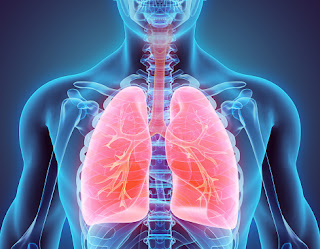Lung cancer is a very serious disease that takes a huge toll on patients and their families. But just as importantly, it takes place for many years before symptoms appear. While common among smokers (40% of cases), lung cancer also affects people who have never smoked, as well as those who do so in small but significant amounts. Only 18% of all lung cancers are caused by smoking.But despite the fact that only 6-7% of adults are diagnosed with lung cancer each year, you can be almost certain the person at least knows about it, or if not, they’re aware they should be. These facts and myths will help to explain how lung cancer can affect many people around us.
What Is Lung Cancer?What Causes It?
One of the most common questions I get when I ask people whether they have ever had to deal with lung cancer is "What is lung cancer?" Well, lung cancer is caused by a type of cell known as the lung, as well as other cells in the body. There are two predominant types of lung cancer—non-small cell lung cancer (NSCLC) and small cell lung cancer (SCLC). Both of these cancers occur when cells within our body can spread and cause further damage to another part of the body or to parts of the lungs. In both of the main types of lung cancer, we typically see a lot more red than blue patches called tumour cells. At times, certain parts of your lung can go through multiple layers of growth within the normal tissue lining. As a result, this could cause blood levels, oxygen, and even carbon dioxide to increase inside of the body, which can lead to organ injury and eventually lung cancer.
1 in 5 smokers will develop lung cancer. American Cancer Society
What Signs Do You Have If Someone Has Lung Cancer? Early detection of lung cancer is a vital component of survival. However, for some people, it never occurs until later stages. With early detection in mind, we need to start thinking about detecting the disease earlier on, and how to best detect it in its early stages. During early diagnosis, signs include: Chest pain.
Shortness of breath (sweating)
What Can Treatment Look Like? Different kinds of treatment are used for various illnesses, including lung cancer. Surgery is used for the majority of treatments, while radiation therapy and chemotherapy are most often used to treat late-stage disease. Chemotherapy drugs are particularly effective against cancer, especially when the cancer is very aggressive or has metastases that occur elsewhere in the body. While chemotherapy has proven to be the most effective in curing and killing cancerous cells, surgery can sometimes be required to save patients from what will undoubtedly be a harrowing recovery.
The goal of treatment is not just to kill the cancer cells. For a given treatment, the primary aim of drug therapy is to destroy them. Many chemotherapy drugs destroy cancer cells at doses over 10 and are used to treat some patients who have advanced disease. Cancer Types, Lungs, Lung Cancer, & More
Other therapies include immunotherapies, stem cells, gene therapy, targeted therapy, radiation, and others.
When someone has caught lung cancer early enough, they should start working towards keeping it from getting worse. As such, it is essential that people follow a number of key steps to help fight back against the disease. Key activities include making sure to eat healthy foods and exercising regularly, which lowers your risk of developing lung cancer. Also, try to avoid smoking and get regular screening. Here’s how other people fight back: Take medical advice when needed.
Watching your blood pressure is very healthy.
Stay active, get enough sleep, and drink lots of water.
Avoid alcohol and tobacco.
have regular tests.

Comments
Post a Comment